Feature - The Pontiac Fiero Design Concept: Excitement for the '80s
HTML by Oliver Scholz
To express Fiero in its simplest terms would be a gross injustice. But to gain appreciation for what Pontiac engineering "magic" has accomplished, you first have to understand what the Fiero concept started out to be. In plain language, Fiero is a sporty, exciting, highly fuel-efficient, highly styled 2-seat personal car.
Pontiac has taken this simple, straightforward concept and turned it into a rolling example of brilliantly innovative engineering. It's a formula that has worked well for Pontiac over the years, and Fiero may be the finest expression of the division's engineering prowess to date.
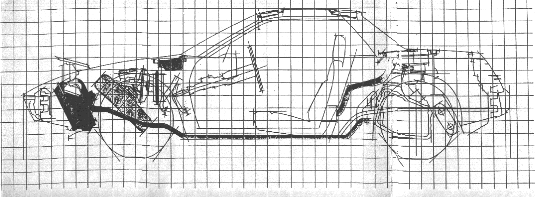
The Fiero can be described as an economy car. It can also be considered a practical and durable car. And, by its technical specifications alone, Fiero may legitimately be called a sports car. The beauty of Fiero is that it's all of these cars, presented in a distinctly dramatic, functionally beautiful Pontiac shape. And best of all, Fiero is one of Pontiac's best examples of what driving is supposed to be all about: pure, unabridged fun!
You are about to find out what makes Fiero work, and why Pontiac engineers designed it the way they did. You'll see that Fiero posesses a rare blend of individual features that, when taken together, add up to one of the most innovative and exciting cars ever built.
Designing the Fiero
When Pontiac engineers began designing the Fiero, some very basic decisions had to be made. Since the traditional body/frame chassis design has given way to the unibody structure on the majority of contemporary cars, Pontiac engineers could have been content with this path for Fiero. But, as you might expect, a more innovative approach was taken for the Fiero: the Space-Frame chassis concept.
To better understand the advantages of the space-frame, you have to look beyond the automobile for a moment. Think of the basic design of a typical suspension bridge, which is made up of individual, load bearing steel supports. Together, these supports form an incredibly strong structure.
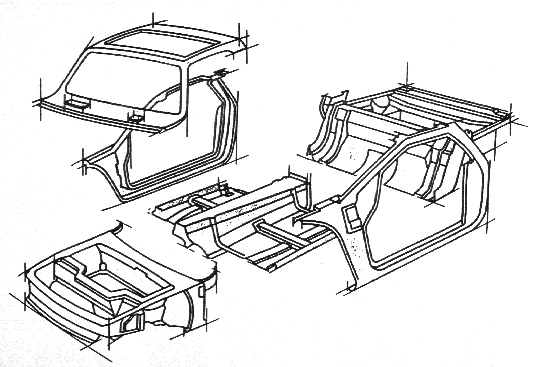
The beauty of the space frame concept is that it's particularly strong in the places it needs to be, with excess weight being eliminated from the total structure.
Race cars have used the space-frame concept almost from the beginning. In a raceing car, structural rigidity is a key concern, but this strength must be attained while keeping the weight of the car low. A classic example of the space-frame concept is used in NASCAR® Grand National racers. Underneath the body panels of a stock car is a complex network of steel tubing that makes up the actual chassis. These tubes come together strategically in a skeleton-like manner, leaving spaces, and saving weight, in noncritical areas.
Given the design requirements of Fiero, the space-frame concept is an ideal solution. Pontiac engineers wanted Fiero to have an extremely strong chassis structure, but they needed to avoid any excess weight that would negatively affect fuel economy. Fiero's space frame is a complete success. It's very strong but well within the original weight goals. Moreover, Fiero has achieved one of the highest ratings ever recorded in GM barrier safety tests.
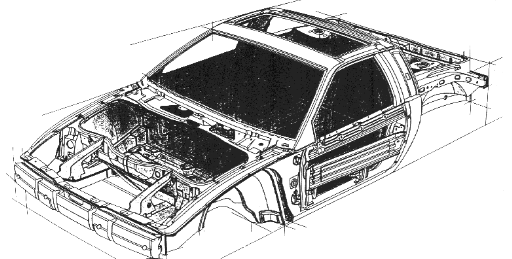
Fiero innovation doesn't stop with the space-frame chassis. When Fiero was introduced in September 1984, it was the first 2-seat, mid-engined production car ever built by an American manufacturer.
Mid-Engine means that the engine/drivetrain unit is placed behind the driver, but ahead of the rear wheels. Mid-engine drive layouts have been common at the highest levels of international racing since the early '60s, including all Indy-type championship cars and Formula 1 Grand Prix machines. Pontiac engineers decided on a mid-engine layout for many of the same reasons that racing car designers do.
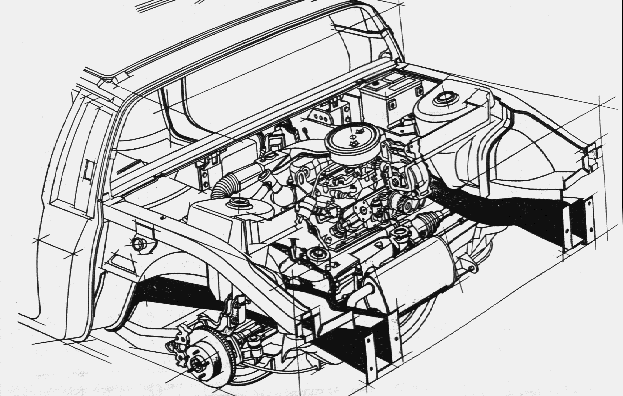
One of the design objectives for the Fiero was optimum, balanced handling performance, so rear-wheel drive was a must. Pontiac engineers knew that in order to achieve this handling goal, the heavy mass of the engine/drivetrain unit had to be placed as close to the center of the car as possible. Given the fact that the Fiero package is compact, a mid-engine layout became the most logical choice.
Fiero's engine is mounted transverely, and is very accessible for routine servicing. The power for Fiero is supplied by Pontiac's updated 2.5 liter 4-cylinder, "swirlport" engine with electronic fuel injection, or a powerful 2.8 liter V6.
In order to take advantage of Fiero's mid-engine layout, Pontiac engineers added other significant features to the Fiero. Fully independent suspension and rack and pinion steering are standard. Because the heavy mass of the drivetrain is not over the front wheels, power steering is not required for the Fiero.
Fiero features four-wheel power disc brakes with lightweight aluminum calipers for consistent stopping performance. A 23mm front stabilizer bar is par of the standard Fiero suspension package.
The Fiero design features work together to make it one of the most impressive performing Pontiacs in history. One test drive will convince you that Pontiac engineers have done their work well.
The Pontiac Fiero Manufacturing concept: Innovative Assembly
The Pontiac Fiero is built like no other car in the world for one very important reason: its advanced design concept requires the most advanced assembly technology available. And, in some cases, new technology had to be designed and created in order to get the job done right.
Pontiac manufacturing experts played a major role in the Fiero design process, and they developed entirely new and unique assembly operations to ensure that quailty was designed and built-in, right from the start. Since Pontiac's "home" plant was selected to build the Fiero, Pontiac manufacturing became responsible for some of the innovative technology required to build it right, the first time.
Since the space-frame plays such a basis nd critical role in the Fiero design concept, Pontiac manufacturing took the responsibility for making it and all other major steel stampings. Over 3900 individual welds are performed on the space-frame during the assembly process.
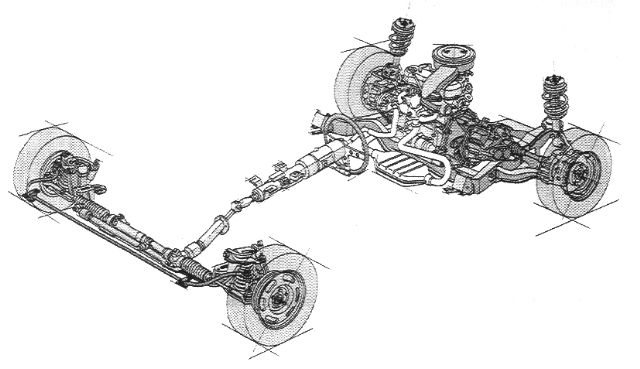
Three basic modular subassemblies (front, rear and compartment floor) are welded together as the first step in the assembly process. The remaining substructures are attached in a single framing station, using the Single-Tool concept. While in this single tool weldment, the space-frame is automatically pierced so that "net" attachment points for other chassis components (such as the cradle for the engine/drivetrain) are precisely made.
A unique part of the Fiero design concept is a separation of cosmetic "fit" from mechanical "function". In other words, the exterior body panels and interior trim items are prepared-for all the way through the assembly process, but their installation is one of the very last steps in final assembly.

One of the assembly steps that ensures precise fit of the body panels is the Milling and Drilling of the Fiero's space frame. The "mill and drill" machine is a single fixture that prepares the space-frame for the location of the body panels. This is achieved by machining, or "milling", 39 separate body mount pads located on various points of the space-frame. The machine also uses a "master" gage point on the door frame ring to locate all the holes on the mounting pads for precise "drilling". This process is a worldwide industry first.